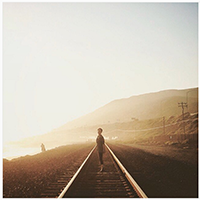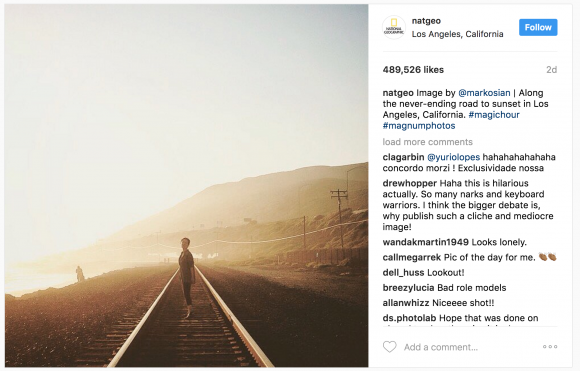NatGeo did not select nor publish that photo on the railroad, a contributor did
posted Thursday, April 13, 2017 at 2:48 PM EDT

Earlier today, DIY photography published a piece on the supposed uproar of disapproval of an Instagram photo published by National Geographic. Though their heart is in the right place, as taking photographs on railroads is absolutely a bad idea, it's important to know how or why an image like this got posted in the first place: National Geographic, their photo editors and staff, likely had nothing to do with either the selection of the photo, nor its publication, so it's not entirely fair to blame National Geographic for endorsing the behavior.

National Geographic doesn't run their Instagram like a typical page. In fact, they don't really run it at all. Outside of minor editing of spelling and grammar, National Geographic (and it's many sub-category profiles such as NatGeoTravel) are curated and run by a long list of contributor photographers. In an article published on National Geographic's website in 2015, the deputy director of photography at National Geographic, Ken Geiger, explained how they were running their accounts:
“For a long time National Geographic has set the bar for quality photography. It is a brand name that people recognize worldwide as the equivalent to high quality photography. So we decided to handle the account differently. We opened our account to 80-90 of our photographers, probably the best in the world, and they self post. We share the password and the only thing they are asked to do, is to maintain the quality we are known for. Plus little things, like to leave an hour between each post. It’s a simple formula for sharing photography with an audience that otherwise we may not have reached.”
That's right, the photographer tagged in this controversial post is the same person who posted it. National Geographic as an organization had no input into the publication of the image, and likely made no changes to it once it was uploaded. That's just how they roll.
Does this excuse the behavior that is glorified in the image? No, but it does help paint a broader picture of how something like this happens.